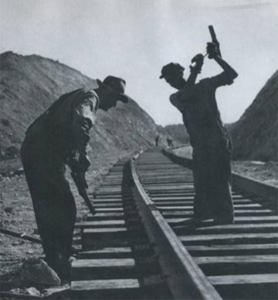 Way back when, few insurance companies would write policies for railroaders — their jobs were considered too risky. Early in the 20th Century (and before the various “Safety First” campaigns that we still see today), a dozen railroaders – on average — died on the job each day. On any given day, tens or hundreds more were injured or maimed.
Way back when, few insurance companies would write policies for railroaders — their jobs were considered too risky. Early in the 20th Century (and before the various “Safety First” campaigns that we still see today), a dozen railroaders – on average — died on the job each day. On any given day, tens or hundreds more were injured or maimed.
So railroaders set up their own group insurance plans and mutual benefit associations. The idea of a pension was not new. But an industrial pension program so that employees could expect to retire (rather than work until they died) was largely a railroad innovation. The first plans emerged in the early 1880s and led to the creation of the Railroad Retirement Board in 1934, which was the model for the Social Security Act a year later.
Credits: Pix and text from Working on the Railroad, Kalmbach 2011 – Submitted by Gary Ostlund


